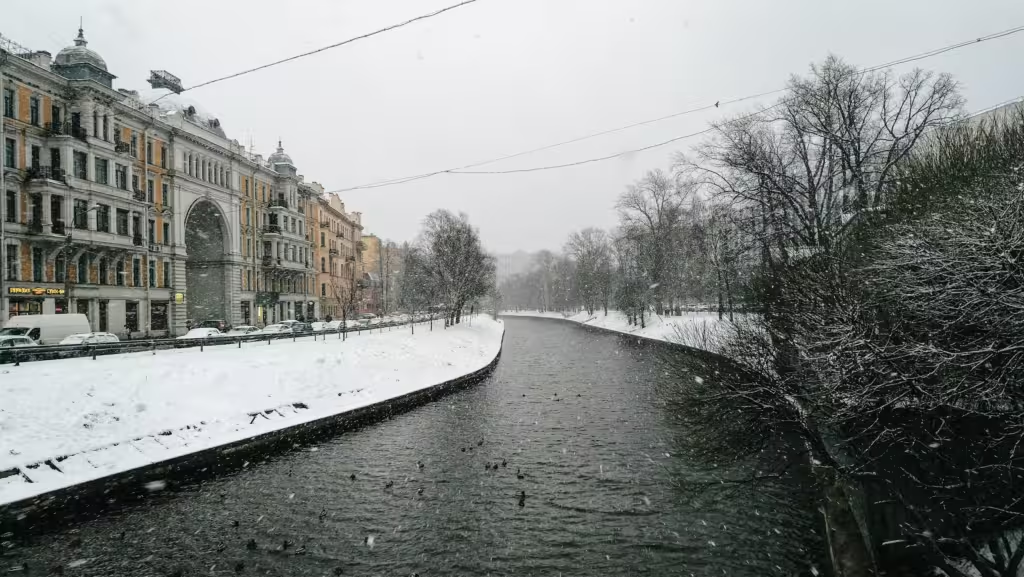Where politics has not contaminated it, the true spirit of science remains: the joy of discovery and the thrill of challenging established views. And thus a number of publications are gushing that, in NBC’s version of the AP story, “Scientists discovered the oldest known DNA and used it to reveal what life was like 2 million years ago in the northern tip of Greenland.” And in their enthusiasm they are overlooking the extreme political incorrectness of the news that “During the region’s warm period, when average temperatures were 20 to 34 degrees Fahrenheit higher than today, the area was filled with an unusual array of plant and animal life, the researchers reported.” Sorry, did you say 20 to 34 degrees Fahrenheit (12.5 to 20°C) higher than today’s unprecedented global heating climate breakdown? And life flourished? And tipping points were not tipped? What is this heresy? Can it be science?
Oh yes. And it’s all great fun. See:
“With animal fossils hard to come by, the researchers extracted environmental DNA, also known as eDNA, from soil samples. This is the genetic material that organisms shed into their surroundings – for example, through hair, waste, spit or decomposing carcasses.”
We’re not kidding. It sounds gross, but also utterly fascinating. And it gets better.
Not only did they find traces of “geese, hares, reindeer and lemmings” when all they’d found before was “a dung beetle and some hare remains”. (And yes, we know nature is wonderful in all its manifestations including that “Some species of dung beetles can bury dung 250 times their own mass in one night” but still “I went to Greenland and all I got was this lousy dung beetle” has a certain poignancy.) They found hairy elephants and trumpeted with glee:
“‘I wouldn’t have, in a million years, expected to find mastodons in northern Greenland,’ said Love Dalen, a researcher in evolutionary genomics at Stockholm University who was not involved in the study.”
It wasn’t in a million years. It was two, apparently. And here even we, with our various “climate stripes” reconstructions of conditions stretching way back into the past, are startled. We knew it was a lot warmer than today throughout the entire Cenozoic (the 65 million years since the non-avian dinosaurs got the comet) with an especially dramatic and life-enhancing spike in the Paleocene-Eocene Thermal Maximum around 55 million years ago and the “Eocene Optimum” (a revealing name) that lasted for about the next 10 million years. But the PETM wasn’t 20°C warmer than today, or even 10.
Still, climate is, dare we say it, highly variable. As the story paraphrased “senior author Eske Willerslev”, a Cambridge geneticist, “millions of years ago, this region was undergoing a period of intense climate change that sent temperatures up”. And why pray tell was it doing so? Remember, two million years ago the Earth had already cooled into the Pleistocene ice age in which the Holocene is but a brief and comparatively cool warming interval. (Again, see our stripes graphics.)
Obviously the story has to come to the opposite conclusion and so do the researchers. Thus:
“Willerslev believes that because these plants and animals survived during a time of dramatic climate change, their DNA could offer a “genetic roadmap” to help us adapt to current warming.”
Yeah? How? By turning into mastodons?
National Geographic pulls a similar stunt, enthusing about the story in all kinds of traditional and proper NG ways before insisting that:
“Together, the DNA paints the picture of a complex, fully integrated ecosystem—one that existed and developed during an era when the polar region was somewhere between 11 to 17 degrees Celsius (about 20 to 30 Fahrenheit) warmer than today, and an era that provides one of the closest possible analogs to our future with climate change.”
Bosh. What computer has the Arctic 17°C warmer than today in the foreseeable future? Especially since they then do another double-twist by citing an ecologist not associated with the story that it’s great news and therefore irrelevant:
“There is a thread of hope, he [Brian Buma of the Environmental Defense Fund] says—it’s remarkable that such a rich habitat existed in a hot world. But a crucial difference is that ecosystem likely had a long time to adapt and evolve, compared with the planet’s current rate of warming.”
So exactly like unlike today when we are all doomed by warmth no matter what some dumb scientist says. A view NG eventually also gets around to crediting to Willerslev:
“The study’s era, about two million years ago, is not a perfect analogy for the future. Earth had been hot for several million years but was cooling toward a more familiar climate state, shifting into a period of oscillating icy and warm stages.”
So yeah, not a perfect analogy given the obvious natural cooling cycle, benefits to life of warmth and general lack of hairy-elephant-on-fire tipping points.
What the story really proclaims, through the PC climate fog, is that nature is variable and that science proceeds by upsetting established views. Bring it on, spit and carcasses and all, we say.
Even witch burnings. Over at Scientific American they discovered that “Medieval Witch Hunts Influenced by Climate Change”. Aaaack? Yes. Author David Bressan writes “The Little Ice Age was a period of climatic deterioration, characterized in Europe and North America by advancing mountain glaciers and prolonged periods of rainy or cool weather…. These difficult times also see the emergence of a new kind of superstition, that witches could “make weather” and steal the milk from the (starving) cows.”
No, wait. We should say “Author David Bressan wrote” because the piece was published back in 2014. When there still was a Little Ice Age. (And, to be snide, the Middle Ages still ended around 1400 not 1776; that he situates a 1562 storm in the Middle Ages and the entire witch-burning horror that, in fact was distinctly a product of the Renaissance and “Enlightenment” is a bit of a blemish on the piece.) And a Medieval Warm Period to precede it. We very much doubt such a piece would get into Scientific American today… and not because it put the Thirty Years War in the Middle Ages.



And to think that I used to trust SA, NatGeo and the like. Note; past tense.
It Chinooked here in Calgary overnight….went from -20 to -3…..I was able to adapt to this while I slept. I think that throws the “time to adapt” comment out the window…
To paraphrase former world chess champion Garry Kasparov: "In science, the mode of reasoning is fixed and the outcome is unpredictable, whereas in Global Warming, the outcome is fixed and the mode of reasoning is unpredictable."
"But the PETM wasn’t 20°C warmer than today"... I don't know why Dr. Robson included that link. It brings up an article about how the earth might warm dramatically in the next 140 years ("less than five generations"?!) and implicitly assumes there will be no socioeconomic changes, no technology advancements, and no peak oil in the next 140 years.
Oh yeah... the article also says the PETM was 7°C warmer than today, and hottest the climate has been in 60 million years. Except I seem to recall reading that the Holocene Optimum (about 7000 years ago) was 5°C - 7°C warmer than today.